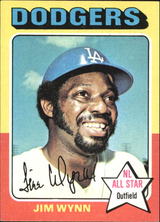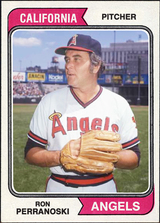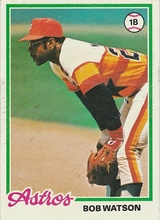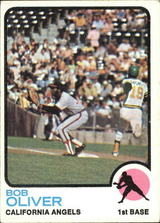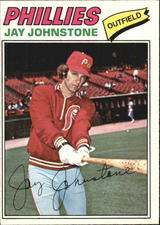The Boys of Summers Past #2
This is the long-promised follow-up to my Boys of Summers Past #1 post that covered six baseball Hall-of-Famers who have died (so far) in the St Louis Browns/Washington Senators of a year that is 2020. The players highlighted here are not HOFers, though one of the men achieved baseball immortality on an October afternoon with a performance that is honored in Baseball’s Valhalla. A non-player is given his due as well—you may have recognized the nod to him in the two posts’ titles. All were lost to us this year.
From Steve’s Hall of Not-too-Shabby
(In a particular order)
I will always remember the “Toy Cannon” for his glorious initial season for my beloved 1974 Dodgers. He will be best remembered as an Astro, though, and the 11 seasons he spent with them (1963-1973) endeared him to Houston fans and to the organization. After his final season in 1977, he returned to work in a variety of roles for the team right up until his death this year.
For 9 of his 11 seasons in Houston, Wynn teamed up with Joe Morgan to form a compact dynamic duo. Wynn, a power-hitting centerfielder at 5’10", and Morgan, a second basemen whose power didn’t develop until he was dealt to Cincinnati, at 5’7”; each was listed at 160 pounds.[2] Morgan likely didn’t try to hit homeruns in the cavernous Astrodome. It is remarkable that Wynn—in a pre-steroid era—did. In fact, in the modern dead-ball era year of 1967, Wynn finished second in the National League to Henry Aaron in homers (with 37 to the HR King’s 39). Aaron played in the homerun-friendly Fulton County Stadium. Fun fact: In 2019 a homer was hit every 25.2 at-bats in the NL, while in 1967 the number of ABs per HR was 49.9. So Wynn’s 37 homers that season was equivalent to hitting 70 in 2019![3]
As I said, I remember Jimmy Wynn fondly for his MVP-level performance for the NL-champion 1974 Dodgers. He hit 32 HRs, scored 104 runs, drove in 108 runs, and drew 108 walks. The 1974 Dodgers’ NL Championship Series win against the Pirates, and subsequent loss in the World Series to the Oakland A’s were Wynn’s only postseason appearances. Unfortunately for him and his team, a late season injury to his shoulder limited his effectiveness. In the World Series he did hit one homer, and he and his injured right shoulder played a part in—for me at least—the most memorable moment of the Series. Watch and hear Vin Scully call the play in a short YouTube clip. You will not be disappointed!
The injured shoulder effectively ended the Toy Cannon’s career, though he had one more contribution to make to the Dodgers. After a disappointing injury-marred second season with the Blue, he was dealt (with pieces) to Atlanta for Dusty Baker (and pieces). Baker went on to play eight productive seasons in Los Angeles, while Wynn struggled mightily through one season in Atlanta.
Another Dodger. Go figure. I was too young to have been a fan during his glory days, but I remember him well as a pitching coach under Tommy Lasorda in the 1980s. I can still picture his walk to the mound: Hands crammed deep into the pockets of the warm-up jacket he wore in all weather. Taking small steps, almost tiptoeing, with his head kept bowed until the moment when he’d lift it to look toward the bullpen, while digging out of a pocket either his left (Steve Howe) or his right hand (Tom Niedenfuer) to signal for the relief pitcher Vin Scully had already told his listeners would be coming in to pitch. Then he’d extend his hand so that Bob Welch or Burt Hooton could flip him the baseball before walking away to take a shower. If the pitcher—possibly Jerry Reuss or Tim Belcher—had pitched reasonably well, Perranoski might bestow a manly, sympathetic slap on the ass.
In his heyday with the Dodgers in the 1960s, Perranoski was probably the best closer in the game. In 1964, he went 16-3 with 21 saves and an ERA of 1.67, and finished 4th in voting for NL MVP.[4] In eight seasons in L.A. he won 54 games, saved 100, and compiled a 2.56 ERA. He was traded to Minnesota, and he had an eight-win, five-save debut season there—enough to be called “one of the AL’s best firemen” on the back of his baseball card. He followed that by putting together major league-leading totals of 31 and 34 saves for the 1969 and 1970 Twins teams. It turns out that not having Koufax and Drysdale with their combined 60 complete games per year as teammates was a boon, opportunity-wise. The lefty hit the wall hard in 1971, and retired after pitching just 11 innings for the Angels in 1973.
Watson played most of his career with the Houston Astros, over parts of 14 seasons from 1966-1979, and full-time for his best years from 1971-1978. He played first base and left field as a teammate of Joe Morgan and Jimmy Wynn. His power numbers were unimpressive, but he hit for average (.297 as a ’stros man) and drove in runs (100+ RBIs twice). He made two All-Star Games with Houston.
I remember him with the Yankees later in his career (probably because the Astros didn’t appear often on NBC’s Saturday morning telecasts; first because they weren’t very good, and later because their garish bright yellow and orange, ugly softball uniforms blew the fuses of early color televisions). In his only World Series action, he led the Yankees in HRs (2), RBIs (7), and hit .318 in a losing effort versus the Dodgers.
Watson was the first player to hit for the cycle in both leagues. After his retirement he served as General Manager for the Astros and the Yankees, and became MLB’s first vice president of discipline. But his oddest “accomplishment” has to be that he (didn’t actually) score baseball’s one-millionth run.
Per Wikipedia:
Watson was credited with scoring the 1,000,000th run in major league history on Sunday, May 4, 1975, at 12:32 in the afternoon. Watson scored from second base on a three-run homer by teammate Milt May at San Francisco’s Candlestick Park. It was known that the 999,999th run had already scored, with sponsored updates being provided by and to every ballpark. Despite the lack of in-game urgency, Watson ran at full speed, reaching home plate approximately four seconds before Dave Concepción, who had just homered in Cincinnati and was also racing around the basepaths. “I never ran so fast in my entire life,” said Concepcion. But it was Watson who won $10,000 and one million Tootsie Rolls provided by the event’s sponsor.[5]
One hopes he was able to eat all one million Tootsie Rolls before they turned to rock-hard brown bullets as they tend to do.
Born in Louisiana, Oliver moved to the Sacramento, California area as a young teen. He attended Highlands High School and American River Junior College in—almost—my neck of the woods. His path to the majors was an extended one. He spent five seasons in the Pirates’ organization, getting only two at-bats with the big club. His break came when he was drafted by the newly-formed Kansas City Royals before the 1969 season. He had a fine rookie year, having a 6-for-6 day at plate along the way. He followed that in 1970 with his best season, hitting 29 homers and driving in 99 runs.
On the website RipBaseball.com, this closes his obituary:
When asked about his career highlights, Oliver mentioned the 6-for-6 game. But he had another accomplishment that was personal. “For three years in a row, I had a grand slam on the Fourth of July. The Fourth of July was my Dad’s birthday,” he said.
Oliver’s son Darren Oliver, also a product of Sacramento schools, pitched for 20 seasons in the big leagues.
The Joker in my deck. There are more accomplished players below the fold here, but they played mostly before my time (though Tony Fernandez didn’t, and he might be the best player on the page). But there is something to celebrate about a player that managed to play 20 seasons in the big leagues with, seemingly, “beer league” talent. That he was a briefly a Dodger hardly matters.
Beyond noting that a very small percentage of players manage to play in 20 major league seasons, there aren’t a lot of superlatives I can relate about Johnstone’s playing career. He never made an All Star team or (as far as I know) got a single MVP vote. But he did hit a pinch homerun in game four of the 1981 World Series to start the Dodgers’ rally—they trailed 6-3 at the time and were down two games to one to the Yankees—that led to the Dodgers’ series win. I listened to the game six clincher in the NAVFAC Centerville Beach guard shack (I wangled the assignment so I could hear it).
Here is a testament to Johnstone’s All Star-level “baseball mind” excerpted from his Wikipedia page:
Johnstone pulled off a number of infamous pranks during his playing days, including placing a soggy brownie inside Steve Garvey’s first base mitt, setting teammates’ cleats on fire (known as “hot-footing”), cutting out the crotch area of Rick Sutcliffe’s underwear, and locking Dodger manager Tommy Lasorda in his office during spring training. Johnstone also nailed teammates’ spikes to the floor, and once replaced the celebrity photos in manager Lasorda’s office with pictures of himself, Reuss, and Don Stanhouse.
In a 1981 game against Pittsburgh, Johnstone and teammate Jerry Reuss dressed up as groundskeepers to drag the Dodger Stadium infield in the fifth inning of a game. Afterward Lasorda yelled at them and sent Johnstone to pinch-hit the next inning as a punishment; however Johnstone ended up hitting a home run. During the Dodgers’ 1982 Spring Training, Johnstone locked Lasorda inside his motel room by tying his doorknob to a palm tree. […] Johnstone also once dressed up in Lasorda’s uniform (with padding underneath) and ran out to the mound to talk to the pitcher while carrying Lasorda’s book and a can of Slim Fast.
Johnstone death this year was caused by the COVID-19 virus. I would like to believe he’s giving the relatively humorless Bob Watson a “hot foot” right now in the great sandlot in the sky.
Notable others
(In willy-nilly order)
♦ Don Larsen He will long be remembered as the only pitcher to throw a perfect game in the World Series. During his rookie year in 1953 he set a record for pitchers by collecting hits in seven consecutive at-bats. In his second season he had a W/L record of 3-21 and, over the course of a 14-year career, he pitched for six teams and compiled a 81-91 record.
♦ Lou Johnson Before my time, but I recently watched Sandy Koufax’s masterful 1965 Series-clinching performance on YouTube, and Johnson was the Dodgers cleanup hitter, and according to Vin Scully, the Dodgers’ best power hitter. So I looked him up. He tied Jim LeFebvre for the team lead in homers with 12. Don Drysdale, a pitcher was seventh with seven! Johnson led the team with an unimpressive .391 slugging percentage (Drysdale’s .508 mark was more impressive, but he had too few ABs to qualify.) The Dodgers were World Champions! What a different game it was then.
♦ Tony Fernandez Fantastic shortstop for the Blue Jays and others in the 1980s. He was a five-time All Star, a four-time gold glover, and he hit for the cycle on September 3, 1995. Fernandez came from the shortstop factory of the Dominican Republic, San Pedro de Macorís.
♦ Ed Farmer Career reliever who pitched for eight teams. He saved 30 and made the All Star game in 1980 while pitching for the ChiSox. He parlayed that performance into a three-year contract worth $450K per year, by far the biggest of his career. He was traded twice and recorded ERAs of 4.61, 4.86, and 5.35 over the length of the contract, after which he retired and enjoyed a 28-year career as a broadcaster for the White Sox.
♦ Glenn Beckert Steady if unspectacular second baseman on Cubs’ teams of the mid 1960s to mid 1970s. Four-time All Star and winner of one Gold Glove. He never played in a post-season game.
♦ Bobby Winkles I remember him in the 1970s as a coach and manager of the California Angels. I thought he was in his 90s then. But of course he wasn’t. He was 43 when he managed his first season for the Angels in 1973—17 years younger than I am today.
♦ Mike McCormick Made his debut with the New York Giants in 1956 at the age of 17. Made All Star Games in 1960 and ’61, and won the Cy Young Award with the San Francisco Giants in ’67. He gave up Henry Aaron’s 500th career home run.
♦ Roger Kahn Wrote the classic The Boys of Summer about baseball and the Brooklyn Dodgers of the 1950s. In 2002 Sports Illustrated ranked it #2 on list of the 100 greatest book ever written about sports, and it has reportedly sold close to three million copies.
See also The Boys of Summers Past #1.
—
Notes
- Together these two posts showcase examples of the faces of each of the ten Topps© baseball card issues of the 1970s. Card backs are viewable by clicking (or for touch screens, tapping) the fronts. These backs are from random years, as examples of these are bit harder to find on the Internet than the fronts. [^]
- Heights and weights used here are from BaseballReference.com. I suspect these weights were taken from the players’ rookie seasons while their veteran teammates were still stealing their per diem meal allowances. [^]
- This is a crude extrapolation of the ABs-per-HR statistic. It’s more complicated than that, of course. Still it’s remarkable what the 160-pound (see previous footnote), steroid-free Wynn accomplished while playing half of his games in the airport-sized Astrodome, and facing pitchers like Koufax, Drysdale, Gibson, Marichal, and Seaver who were pitching off of a higher mound than post-1968’s gentle undulation. Not to forget that pitchers then were hardly discouraged from attempting to lodge a 90-mile-an-hour fastball deep in the ear canal of any hitter who appeared to be too comfortable in the batting box. [^]
- In the 1965 voting, Perranoski finished behind Sandy Koufax—the winner—Dick Groat, and Henry Aaron. Willie Mays finished behind him in 5th place. [^]
- Readers will have to read the Wikipedia page to understand why I’ve written “(didn’t actually) score.” Math is hard. [^]

